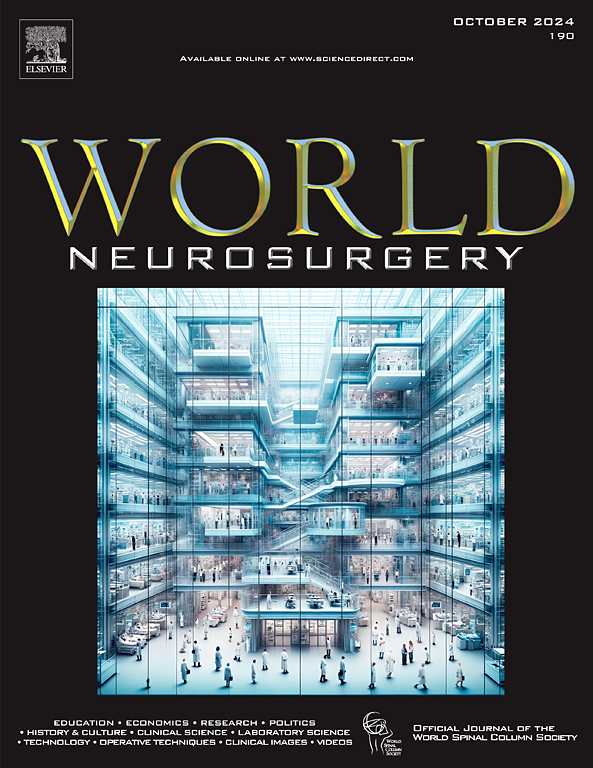超越手术室:从医学院开始的神经外科教育中的性别差异现实。
IF 1.9
4区 医学
Q3 CLINICAL NEUROLOGY
引用次数: 0
摘要
目的:尽管医科女学生的人数不断增加,但神经外科医生的男女比例仍存在明显差距。本研究旨在确定这一趋势在医学生中是否也很明显,考察全球各医学院是如何解决这一问题的,并提出潜在的解决方案:数据包括来自大会注册、摘要提交系统的匿名基线信息,以及两项旨在评估学生在大会前后经历的调查。问卷采用不同的李克特量表,内容包括社会经济背景、之前的大会经历、知识评估、职业抱负以及对神经外科的看法。数据分析使用 GraphPad Prism 进行:共有 171 人参加了大会,其中包括 90 名女性(52.6%)。有 27 名与会者(女性占 48.2%,男性占 51.9%)完成了会前和会后调查。女性提交的论文摘要更多(59.0%),论文排名也更靠前。然而,女性对在神经外科实现工作与生活平衡的可能性的评分为 4 分(满分 6 分),而男性为 3 分(满分 6 分)。大会结束后,在李克特量表上,两组女性的这一评分都提高了1分:这项研究凸显了医学教育期间在职业规划、神经外科科学和实践经验以及指导机会方面的性别差异。大会和指导计划等举措可以从医科女生职业生涯的早期阶段为她们提供支持,从而帮助解决这一不平衡问题。本文章由计算机程序翻译,如有差异,请以英文原文为准。
Beyond the Operating Room: The Reality of Gender Disparities in Neurosurgical Education Starting in Medical School
Objective
Despite the growing number of female medical students, there remains a significant disparity between the number of female and male neurosurgeons. This study aims to determine if this trend is also evident among medical students, examine how various medical schools worldwide are addressing this issue, and propose potential solutions.
Methods
The data includes anonymous baseline information from congress registrations, the abstract submission system, and 2 surveys designed to assess student experiences before and after the congress. The questionnaires covered socioeconomic background, prior congress experience, knowledge assessment, career aspirations, and perceptions of neurosurgery, using various Likert scales. Data analysis was performed using GraphPad Prism.
Results
A total of 171 individuals attended the congress, including 90 women (52.6%). Precongress and postcongress surveys were completed by 27 participants (48.2% female, 51.9% male). Women submitted more abstracts (59.0%) and achieved higher presentation rankings. Both groups rated their interest in pursuing a career in neurosurgery at 5 out of 6. However, women rated the likelihood of achieving a work-life balance in neurosurgery at 4 out of 6, compared to 3 out of 6 by men. After the congress, this rating improved by one point on the Likert scale for both groups.
Conclusions
This study highlights gender-based differences in career planning, scientific and practical neurosurgery experiences, and mentoring opportunities during medical education. Initiatives such as congresses and mentoring programs could help address this imbalance by supporting female medical students from the early stages of their careers.
求助全文
通过发布文献求助,成功后即可免费获取论文全文。
去求助
来源期刊

World neurosurgery
CLINICAL NEUROLOGY-SURGERY
CiteScore
3.90
自引率
15.00%
发文量
1765
审稿时长
47 days
期刊介绍:
World Neurosurgery has an open access mirror journal World Neurosurgery: X, sharing the same aims and scope, editorial team, submission system and rigorous peer review.
The journal''s mission is to:
-To provide a first-class international forum and a 2-way conduit for dialogue that is relevant to neurosurgeons and providers who care for neurosurgery patients. The categories of the exchanged information include clinical and basic science, as well as global information that provide social, political, educational, economic, cultural or societal insights and knowledge that are of significance and relevance to worldwide neurosurgery patient care.
-To act as a primary intellectual catalyst for the stimulation of creativity, the creation of new knowledge, and the enhancement of quality neurosurgical care worldwide.
-To provide a forum for communication that enriches the lives of all neurosurgeons and their colleagues; and, in so doing, enriches the lives of their patients.
Topics to be addressed in World Neurosurgery include: EDUCATION, ECONOMICS, RESEARCH, POLITICS, HISTORY, CULTURE, CLINICAL SCIENCE, LABORATORY SCIENCE, TECHNOLOGY, OPERATIVE TECHNIQUES, CLINICAL IMAGES, VIDEOS
 求助内容:
求助内容: 应助结果提醒方式:
应助结果提醒方式:


